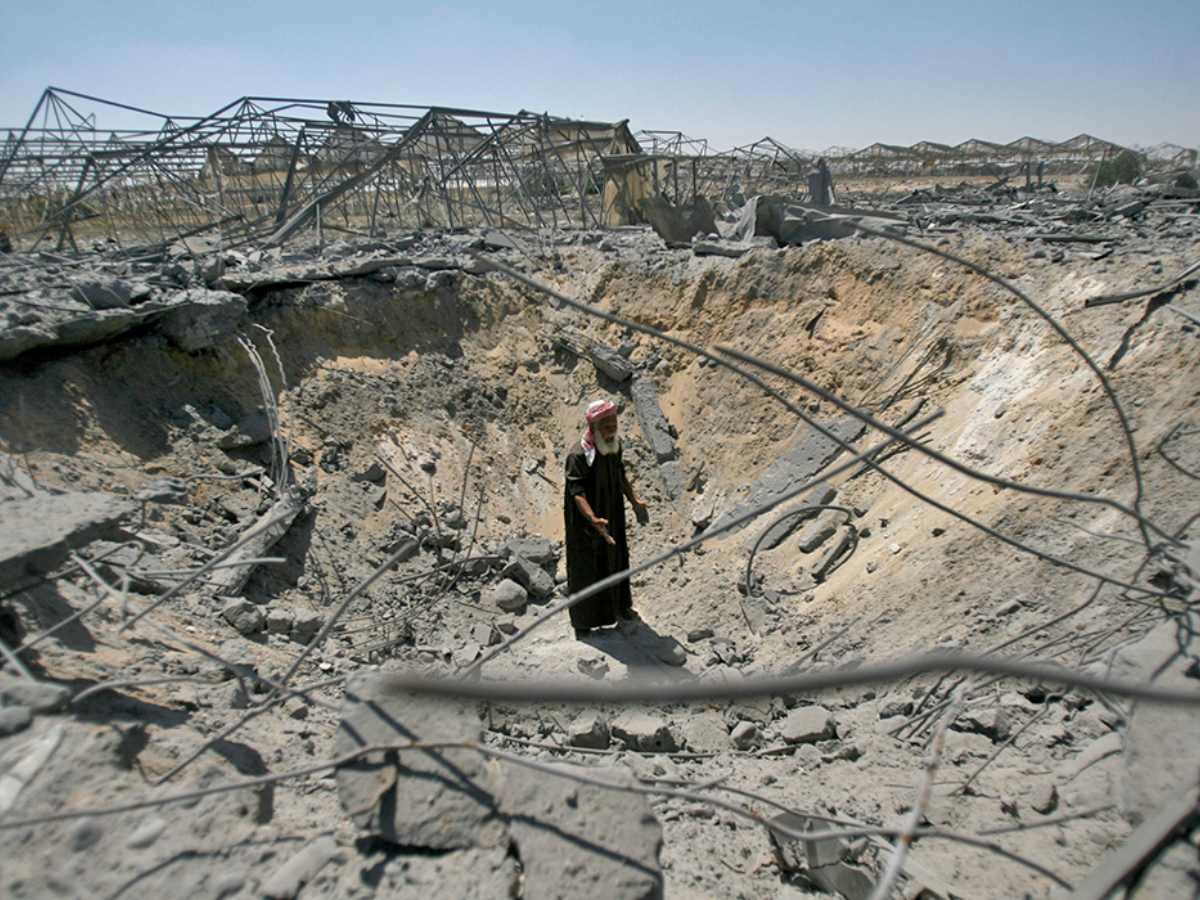In Gaza, after nine months of Israel’s relentless assault, blockade, and starvation, farmers have become crucial to ensuring food security for the population. However, in potential breaches of international law, Israel has also damage or destroyed vast swathes of Gaza’s agricultural infrastructure. To mitigate the impact of the massive displacement crisis affecting Gaza’s entire population of 2.1 million people, Action Against Hunger has intensified its support to local farmers.
The charity’s efforts include food distribution, the promotion of local agriculture, and the implementation of training programmes aimed at enhancing the productive capacities of families still able to farm. These initiatives are essential in sustaining the agricultural backbone of Gaza and providing much-needed food to its residents.
It said that:
Gaza’s agricultural sector has faced immense disruptions in recent years due to the COVID-19 pandemic, the Ukrainian crisis, protracted conflicts in the Gaza Strip, and climate change.
However, since 7 October Israel has caused the situation to ‘worsen to an unprecedented level of deterioration’, explains a food security expert from Action Against Hunger in Gaza.
Gaza: Action Against Hunger support for farmers
Action Against Hunger is prioritising several key areas to support Gaza’s farmers:
- Providing emergency supplies such as seeds, fertilisers, and agricultural tools to encourage the resumption of farming activities.
- Reconstructing damaged greenhouses, irrigation systems, and water resources.
- Offering training on safe agricultural practices amidst conflict-induced contamination to ensure the production of safe food and protect farmers.
Its teams are also focusing on renewable energy installations, water conservation, and smart agricultural technologies to build a resilient agricultural sector capable of withstanding current and future crises.
Giulia Pizzicannella, a food security expert with Action Against Hunger’s emergency team, said:
Our food security activities in Gaza have two main objectives: to provide food for a balanced diet and to support the recovery of the agricultural sector to restore livelihoods and dignity.
Israel has put thousands of lives at risk as communities struggle to access basic foodstuffs due to disrupted supply lines and market access, increasing dependency on humanitarian aid. Israel’s destructive invasion of Rafah in early May exacerbated the conflict’s impact, dismantling local markets and making access to basic commodities nearly impossible.
Current state of farmers and farmland in Gaza
Most remaining farmers cannot access their land, and those who can find it damaged or destroyed.
Approximately 41% of Gaza’s territory is agricultural land. According to UN satellite imagery analysis from May 2017 to 2024, over half (57%) of Gaza’s crop fields and arable land have deteriorated, with significant damage to orchards (61%), vegetables (19%), and cereals (20%).
Israel has also damaged agricultural infrastructure: 33% of greenhouses, 46% of wells, 65% of solar panels, and over 2,300 agricultural structures have been partially or totally destroyed. This destruction violates international humanitarian law, including UN Security Council Resolution 2417, which condemns starvation and denial of humanitarian access as weapons of war.
Even if hostilities cease today, the damage to agricultural land will have long-term negative consequences due to soil contamination and unexploded ordnance. Clearing Gaza of unexploded bombs could take up to 14 years, according to UN experts.
Local markets and food prices
Massive population displacements have devastated agricultural production and led to a significant increase in food prices. Many farmers have lost access to land they have tended for decades, losing not only their livelihoods but also a piece of their history. Despite these adversities, some farmers continue to produce limited crops.
Pizzicannella said:
The entry of agricultural tools and materials into Gaza is crucial to preserve the continuity and resilience of Gaza’s agricultural sector. After nearly nine months of closure, local markets are depleting essential supplies like nylon sheeting used for greenhouses, now repurposed for tents. This shortage, coupled with limited humanitarian aid, has put immense pressure on local agricultural activities to maintain food security.
An alarming analysis by the Integrated Food Security Phase Classification (IPC) at the end of June indicates that the entire population of the Gaza Strip is highly food insecure and at risk of famine, with families facing totally inadequate access to nutritious food.
The future of agriculture in Gaza
Even if a ceasefire is achieved, restoring agricultural production to pre-conflict levels will be a long and complex process, requiring ongoing support to rehabilitate land and rebuild livelihoods. This support must address not only agricultural needs but also housing, health, and psychological well-being.
Action Against Hunger implements crucial interventions to support local farmers, including the rehabilitation of greenhouses and agricultural land. Staff seek suppliers to ensure access to seeds and other essential inputs, such as fertilisers and insecticides. This effort is vital to ensure farmers can grow staples of the Palestinian diet, such as tomatoes, cucumbers, onions, and aubergines.
It said:
Our long-standing relationship with local farmers, forged over twenty years of working in the occupied Palestinian territories, has been instrumental in understanding needs and providing necessary support.
The challenges facing Gaza’s farmers include damage and destruction of land, severe fuel and electricity shortages, and water contamination. Even before the war, the blockade of the Gaza Strip made access to essential agricultural inputs, fuel, electricity, and drinking water difficult.
Now, securing fuel supplies and exploring alternatives like solar energy for irrigation is more challenging than ever.
Featured image supplied




